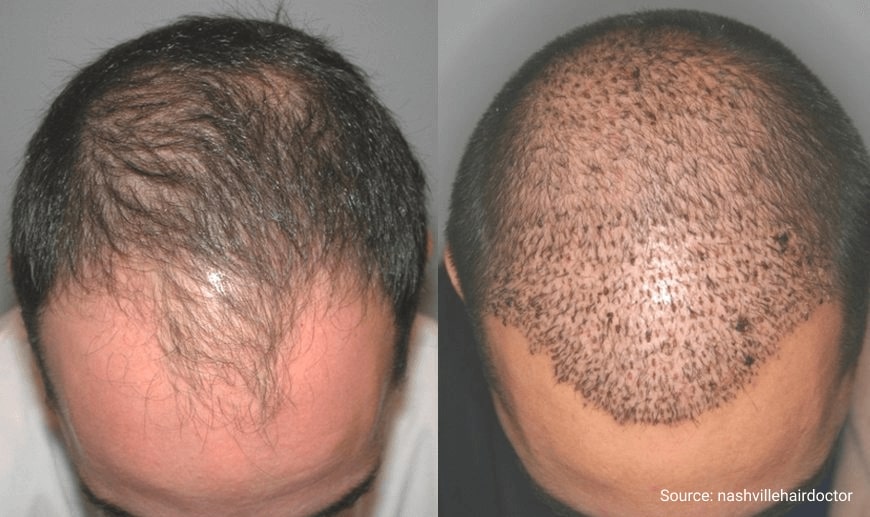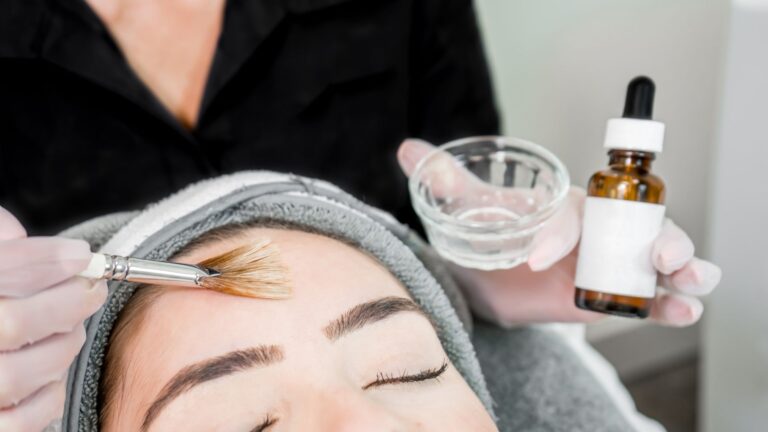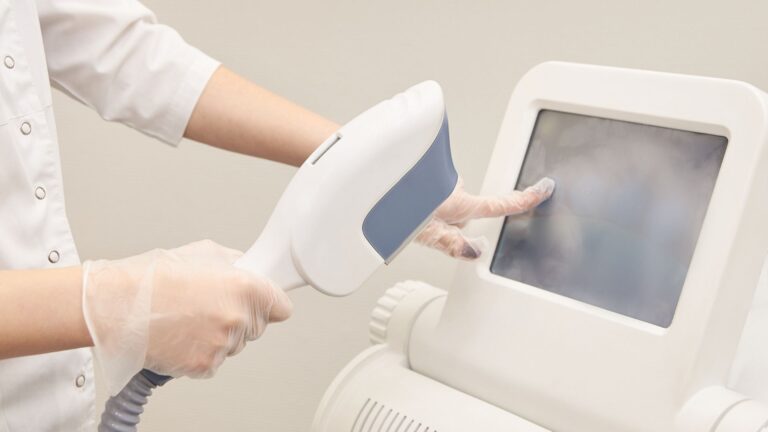How to reverse hair loss and hair thinning, for natural-looking, beautiful hair
Do you look in the mirror only to find your hairline creeping back behind your ears? Is that bald spot spreading wider and becoming more noticeable by the day? Do you catch people looking at their reflection on your head? It might be time to do something about it. If you are like most people, you are searching for the best hair transplant doctor to help you. Look no further, Dr. Dele-Michael is here to help you!

There are many hair loss treatments, but not all treatments are equal
Thinning hair affects many, but it doesn’t have to be a permanent condition. There are many options for hair restoration treatments today, from topical products to LED caps to surgical procedures. But all products and procedures are not equal.
Before you decide to try yet another hair loss cap, capsule or shampoo, you should read about why NeoGraft hair restoration may be the right solution for you.
What is NeoGraft Hair Restoration?
Hair restoration techniques have advanced since becoming popular in the 1990s. Whereas previously the only option of hair restoration was unnatural-looking “plugs” that resembled doll’s hair, now we can mimic your natural hair growth direction and hair density using your own natural hair to produce natural-looking results.
The NeoGraft hair restoration procedure is a follicular unit extraction (FUE) method that uses robotic technology to harvest hair follicles directly from the donor area of the scalp. A specialized wand uses suction to smoothly slide each follicle out of the scalp, avoiding the need to pull and twist. This ensures each follicle is intact and uniform. The procedure is faster and more accurate than manual hair transplants.
Here is why Dr. Dele-Michael considers NeoGraft the best hair transplant approach Vs Other Hair Transplant Techniques
Linear harvesting or manual hair transplants require the doctor to slice a strip of the scalp from the donor area. Follicles are then transplanted from the strip onto the areas of baldness or thinning hair and the scalp is stitched back up, usually leaving a telltale linear scar. Not only that, manual transplants require the doctor to harvest the follicle by pulling and twisting, which could result in damaged follicles that aren’t viable to regrow hair.
While other manual techniques may require repeat sessions for a greater number of follicles to be removed or may not work at all, because the hair follicle was disrupted
during the manual harvest process, NeoGraft can reduce or eliminate the need for additional sessions and procedures. Neograft allows the doctor to accurately extract follicles with pinpoint precision at a faster pace.
For this reason, patients who have larger areas to cover or those who are returning to correct unnatural-looking transplant results should consider Neograft hair restoration for the best chance of treatment success, quicker implantation and quicker healing.

What Happens At A NeoGraft Consultation?
Your consultation is where you’ll gain the knowledge you need to make an informed decision about whether NeoGraft is right for you.
During the consultation with Dr. Dele-Michael, you’ll learn about the procedure, and have your questions answered. You can discuss other hair restoration options with Dr. Dele-Michael if you aren’t sure about NeoGraft.
If you choose NeoGraft, you and Dr. Dele-Michael will discuss the treatment plan and the number of grafts you will need, your donor areas, and hair follicle placement. You’ll receive a surgery date, and Dr. Dele-Michael will advise you on how to prepare before the procedure, including a list of things to do and things to avoid. For example, smoking should be avoided one week prior to the NeoGraft procedure.
What Does The NeoGraft Procedure Entail?
Although it’s minimally invasive, NeoGraft is still a surgical procedure. The upside is you won’t be undergoing general anesthesia where you are asleep and unconscious. Your skin will be anesthetized locally using injections of Lidocaine so you will be awake and comfortable during the procedure.
NeoGraft treatment is an outpatient procedure that takes a few hours. But preparation begins two weeks before surgery and some upkeep is required until you’ve achieved successful results a few months later. You may be prescribed a shampoo before the procedure. If so, follow Dr. Dele-Michael’s instructions on when to begin using it.
So, you have decided to proceed with NeoGraft, that’s great! Here is a guide to help you prepare for the procedure.
2 Weeks Before Procedure
You’ll stop taking any blood thinners e.g. NSAIDs you’ve been prescribed, as these can cause excessive bleeding during and after the procedure. You’ll also stop using any topical hair growth treatments.
1 Week Before Procedure
Quit smoking at least one week before your Neograft procedure. This is important. Smoking cigarettes can delay healing, reduce blood flow to the newly transplanted hair follicles and increase the possibility of infection. For best results, you should abstain from smoking for at least a week after the procedure.
3 Days Before Procedure
If your hair is light, you’ll dye your hair three days before surgery. Light or blond hair is harder to see for follicle extraction. So dyeing it a darker color will ensure the doctor can see each follicle to be removed and used for implantation.
You should abstain from drinking alcohol three days before treatment. Alcohol is a blood thinner and it can lead to other complications during and after treatment. So, leave your celebratory toasts for after you’ve been cleared to drink alcohol again.
Day of Procedure
Dr.Dele-Michael will mark the recipient areas and administer a local anesthetic to your scalp. If your hair is long in the donor areas, it will be shaved for ease of removal. The shaved areas are easily hidden under longer hair, they likely won’t be noticeable following treatment and the hair starts to grow back within days.
You’ll be comfortable, and you may even fall asleep during the procedure.
To begin, donor follicles are extracted using the NeoGraft wand. This part of the procedure takes the longest, as each follicular unit is then separated and prepared for implantation.
And, finally, the donor follicles are implanted in the recipient area in the proper direction.
Finally, immediately following treatment you may experience some swelling and discomfort, which is normal. Dr. Dele-Michael will provide aftercare instructions which may include a prescription pain reliever to help manage these symptoms. You’ll be advised not to touch your new scalp following the procedure. Regardless of how tempting this is, don’t touch it. This can increase your risk of complications.
Here is a post-procedure guide to follow after your NeoGraft treatment
1 Week After Procedure
The days after your NeoGraft hair restoration procedure are crucial to a successful outcome. Be sure to follow all aftercare instructions, and if you have any questions or concerns, contact the doctor.
While you might be able to perform light exercise two days after the procedure, you’ll need to refrain from strenuous exercises like weight training, HIIT, or a 5K for a week. This can cause preventable swelling and discomfort.
Drinking alcohol and smoking cigarettes are still off the table during the first week after surgery. But, you will be able to return to work in a couple of days following the procedure.
You will also need to avoid wearing hats and shampooing your scalp for the amount of time recommended by the doctor.
10 Days After Procedure
You’ll be able to return to all your normal activities by 10 days after the procedure. You can begin your regular hair care routine including regular hair cuts, brushing, shampooing, and product application except for hair dye.
If you’d rather not be gracefully gray or a silver fox, you can resume dyeing your hair after four weeks.
Long-term Results and Hair Growth
The hair will grow in with your normal hair growth cycle several weeks after the NeoGraft procedure, with noticeable growth taking a few months. You’ll notice the grafted hair will begin to shed and regrow in about three to four months. This is normal.
You will being to see the majority of your hair growth in as little as five months and up to 12 months after the procedure. And, you’ll likely notice your hair continuing to fill in up to one and a half years after your procedure.
What Are The Pros and Cons of NeoGraft?
If we weighed the pros and cons of every decision we made, most of us would probably be able to retire early and move to Hawaii where we could surf and sip Mai Tais all day 🙂 Alas, that’s not the case. But you should weigh the pros and cons of NeoGraft hair restoration before deciding on the procedure.
It’s important to evaluate what you believe is important when choosing a hair restoration procedure. Along with your personal goals, the following are a few medical/technical benefits and drawbacks to the procedure.
Pros:
• Faster than other methods
• Minimal to no scarring
• No scalpel
• No stitches
• Quicker healing and recovery
Cons:
• Follicle extraction can be time-consuming
Who Is An Ideal Candidate?
Hair loss doesn’t discriminate. Men and women of all ages battle thinning hair and balding. But there are qualities that make some better candidates than others.
The ideal candidate is healthy and can tolerate local anesthesia. The patient should be able to grow hair in the areas where follicles will be implanted.
Hair loss occurs over time, so candidates should have their hair loss under control since if the hair continues to fall out, additional procedures may be necessary or they may have to return sooner than expected.
People with the following conditions can benefit from NeoGraft hair restoration:
• Thinning hair
• Receding hairline
• Bald spots
• Traction alopecia
• Beard and mustache thinning
• Eyebrow hair loss due to overplucking
• Scalp scarring
• Unnatural-looking results from previous hair restoration
People whose hair loss is due to stress, a health condition, or a side effect of medication typically aren’t good candidates for hair restoration. The hair will typically continue to fall out in these cases, and long-term successful results are unlikely. Also, these types of hair loss are typically reversible following treatment.
Some patients with a history of scarring (keloids), bleeding disorders, and underlying health conditions might not be good candidates. The best way to determine if you’re a candidate for NeoGraft hair restoration is to schedule a consultation with a doctor.
What Is The Success Rate?
Although results vary from patient to patient, the success rate of NeoGraft is between 92% to 98%. Majority of patients experience long-term or permanent results from NeoGraft hair restoration. Success will depend on your ability to follow the doctor’s instructions, ensuring there are no complications following the procedure.
What Are The Side Effects?
The potential side effects of NeoGraft hair restoration are similar to the risks of the linear harvesting method. They include bleeding, infection, itching, swelling scarring, cysts where follicles were removed, numbness, and tingling.
Although scarring is typically minimal to none, some patients may develop tiny white scars where the hair follicles were removed. However, they are usually not noticeable as the hair camouflages the scalp.
Side effects are usually avoidable by following the doctor’s instructions before and after the procedure. If you believe you’re having complications after the procedure you should follow up with the doctor as soon as possible.
How Much Does It Cost?
As with many things, the cost can be a factor as to whether NeoGraft hair restoration is right for you. After all, you’re probably not a bald billionaire like Mansa Musa. Would he have wanted hair restoration if it was available back then?
Hair restoration procedures are considered elective procedures and insurance companies typically don’t cover them. This means you’ll have to pay out of pocket.
With that in mind, NeoGraft can cost between $2000 to $18,000 or more depending on the amount of hair transplanted and how extensive the procedure is. The cost is comparable to other hair restoration techniques.
Take Control Of Your Hair And Restore Your Confidence
Hair thinning and baldness are sometimes inevitable, but they don’t have to be permanent. There are several hair restoration options available that can alleviate the anxiety of hair loss. NeoGraft Hair Restoration can give you the results you want with greater accuracy, faster results, so you can get on with your life, flowing locks and all. Call 212-229-0007 to schedule a consultation with Dr. Dele-Michael

Adebola Dele-Michael, MD
After helping thousands of people with skin and hair challenges, Adebola Dele-Michael, MD covered a wide range of topics in the skin and hair industries. Her mission is to fill the knowledge gap in caring for hair and skin of color.





